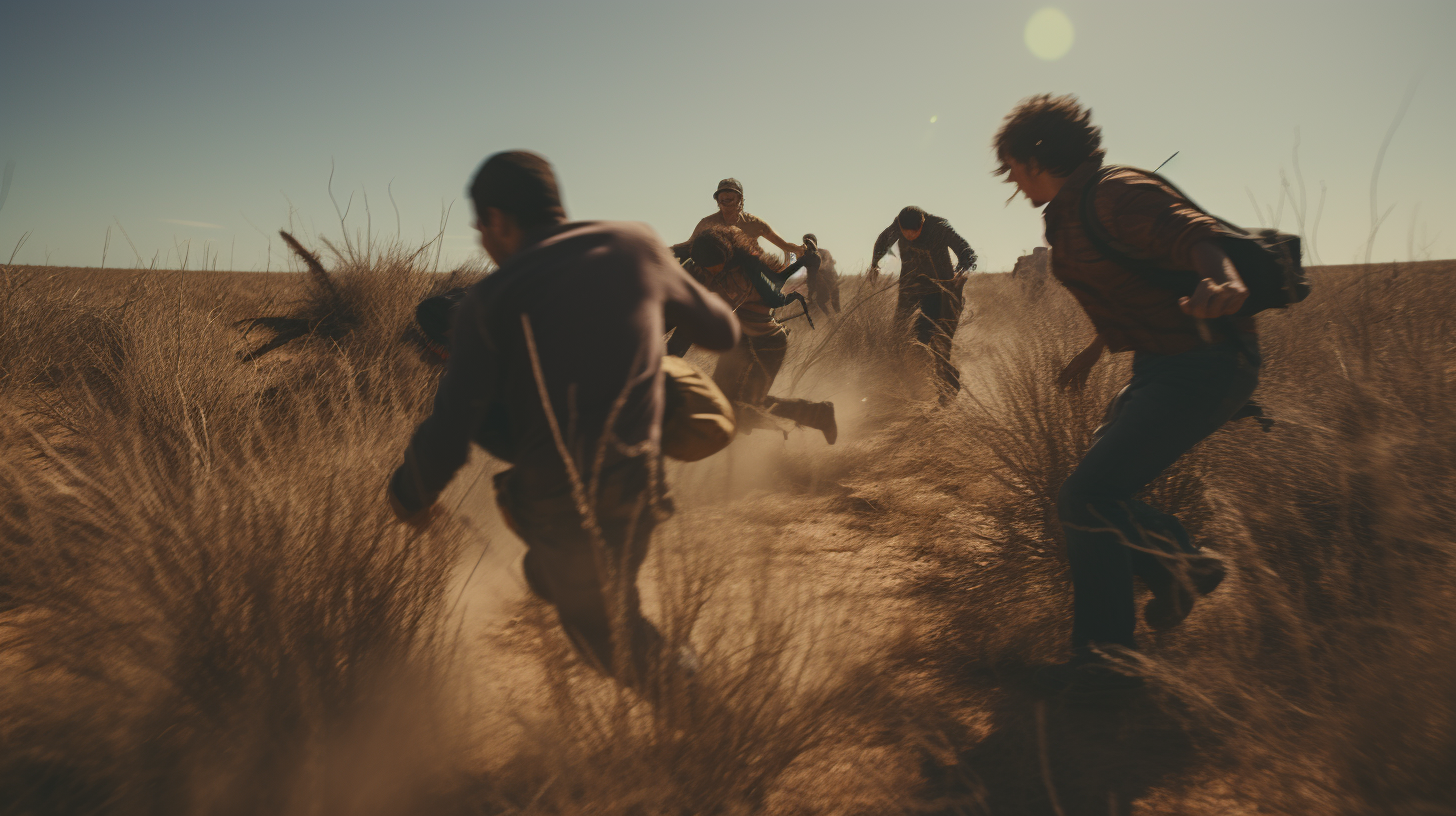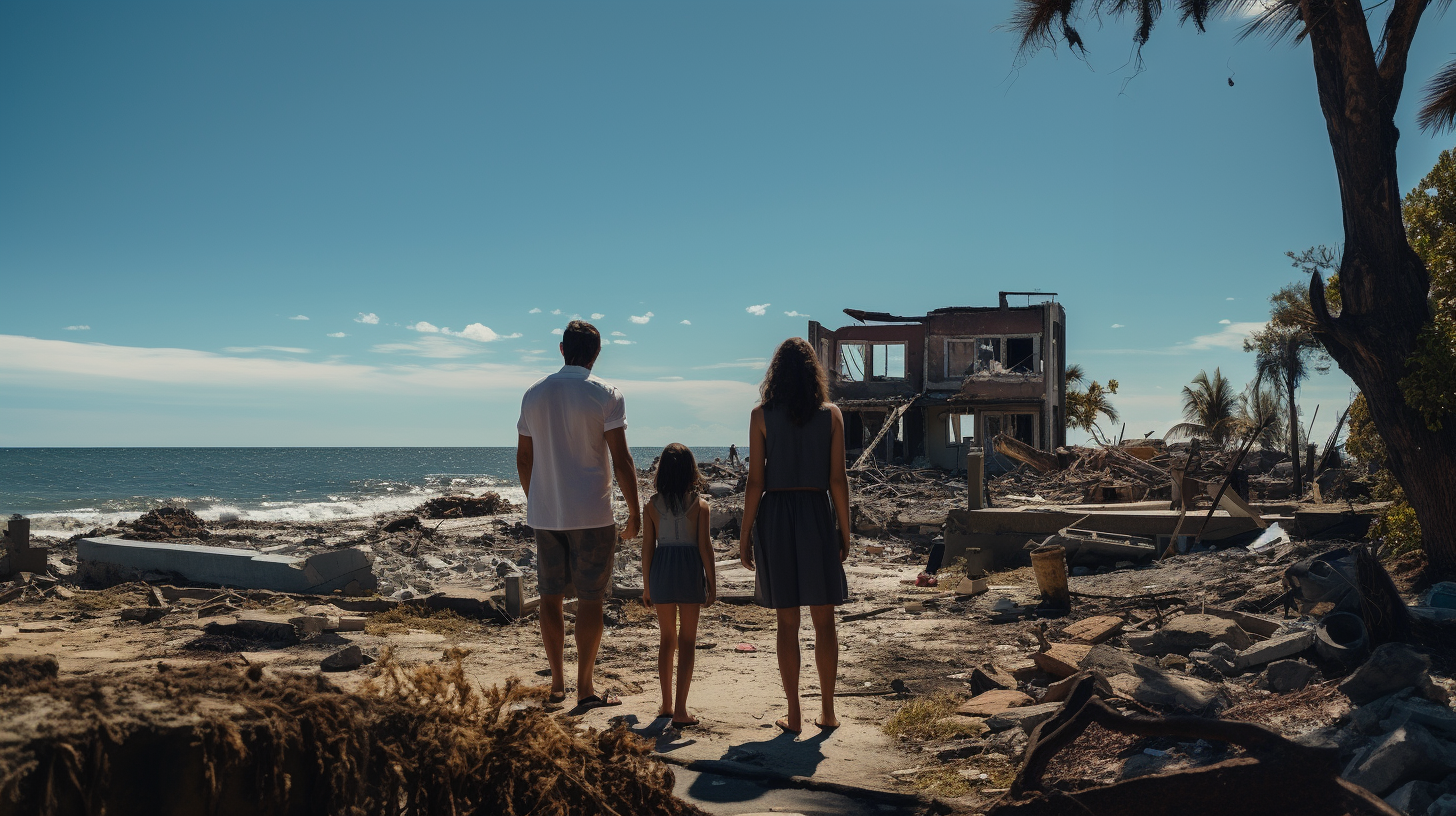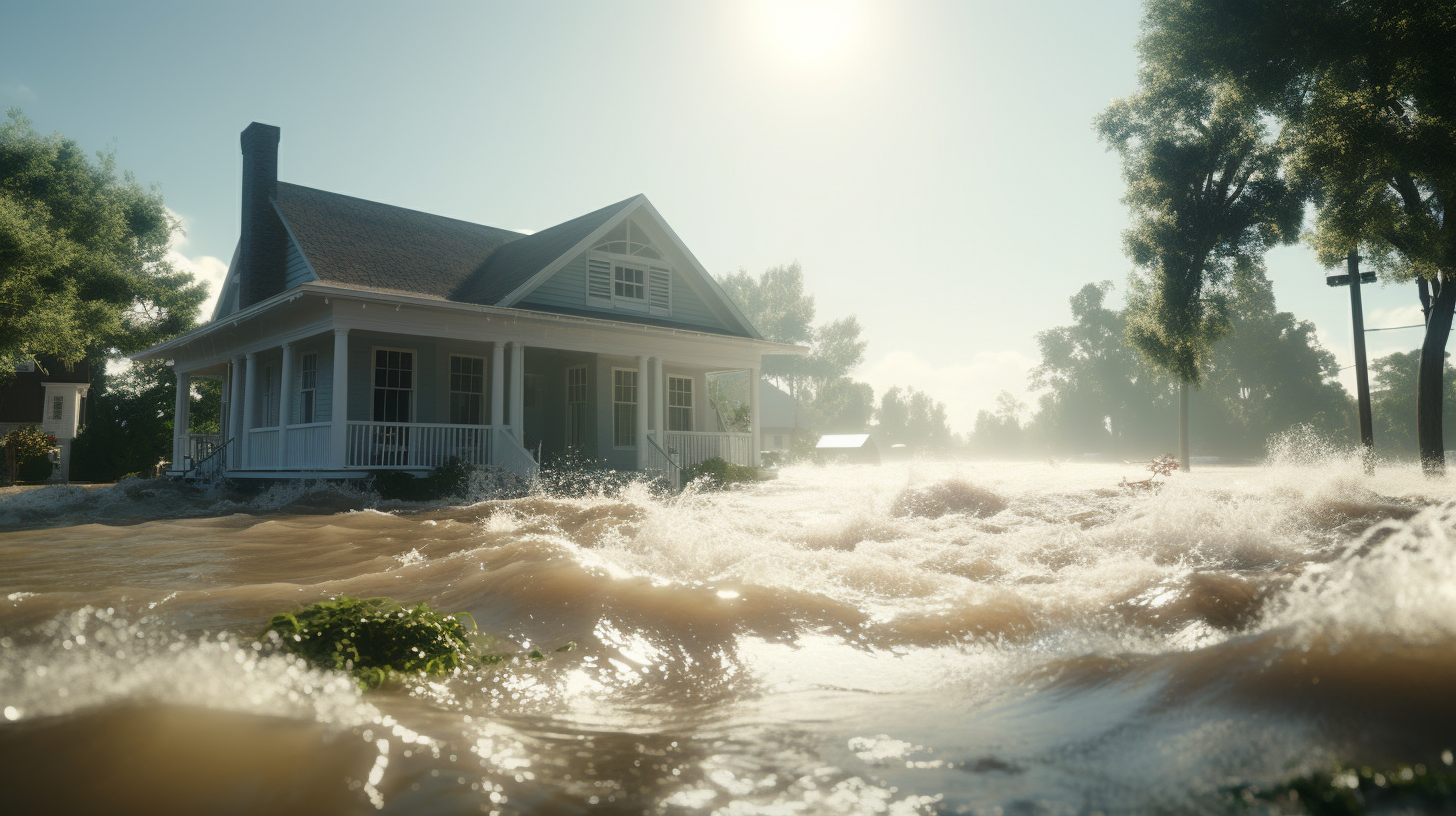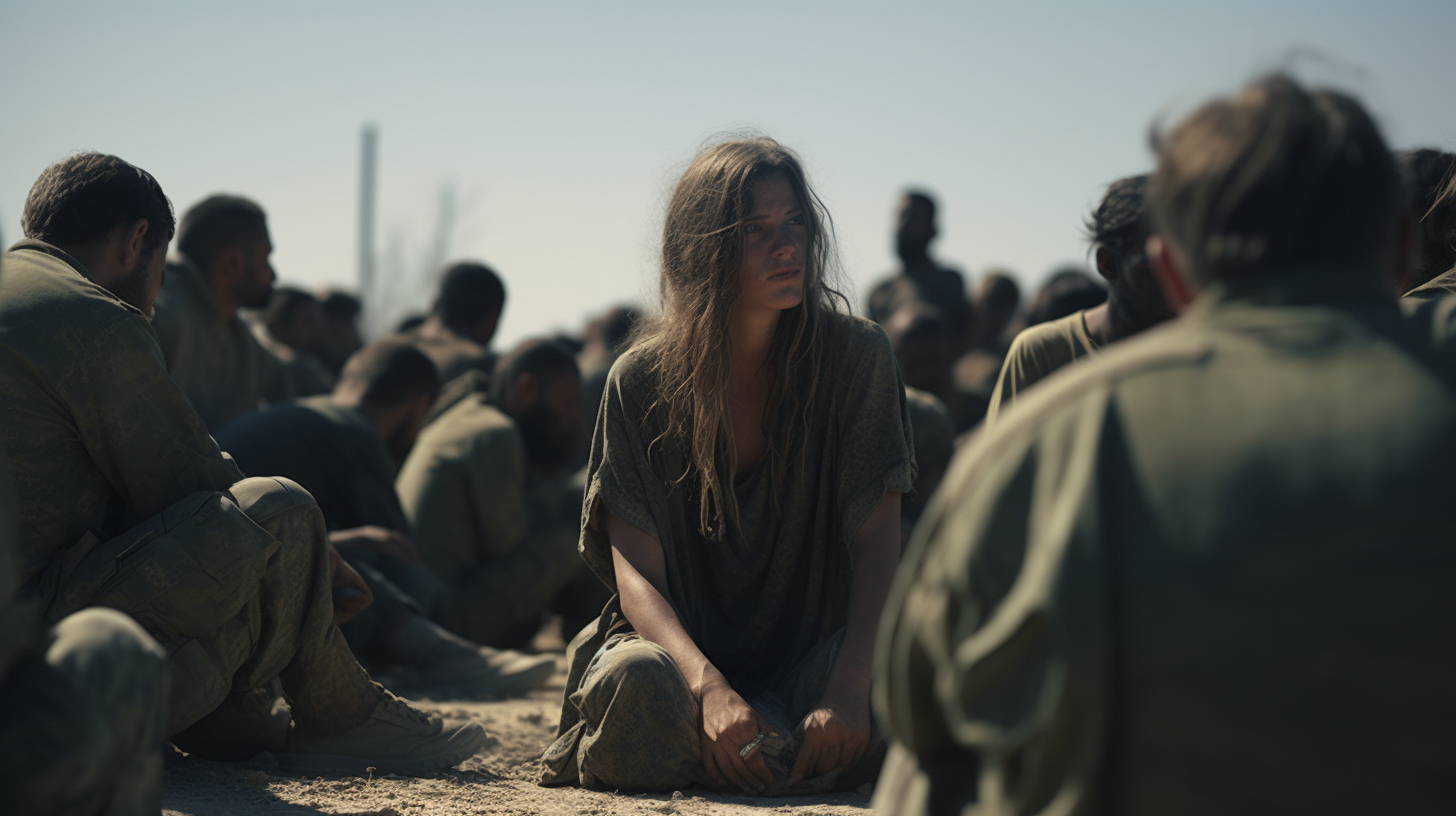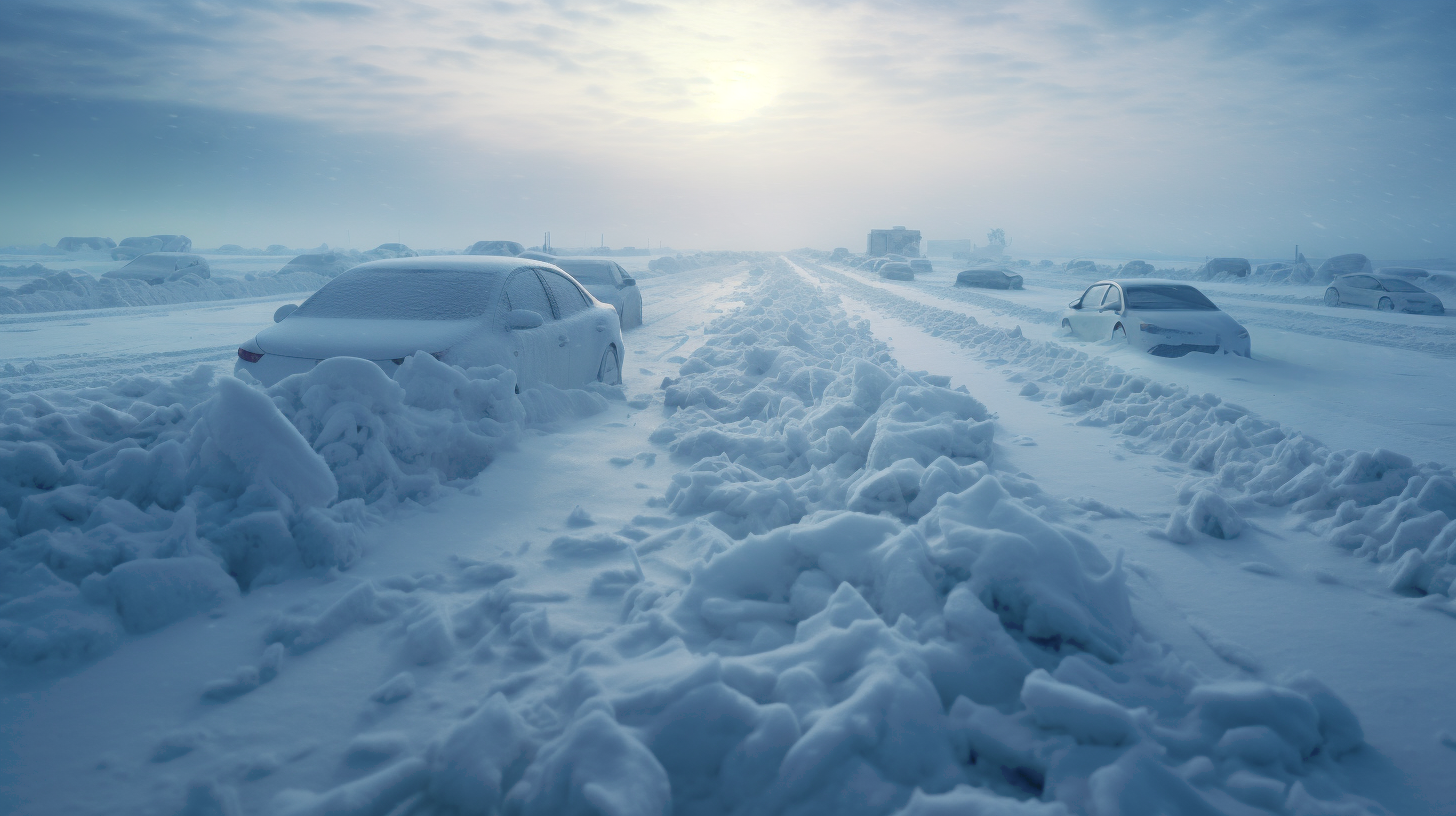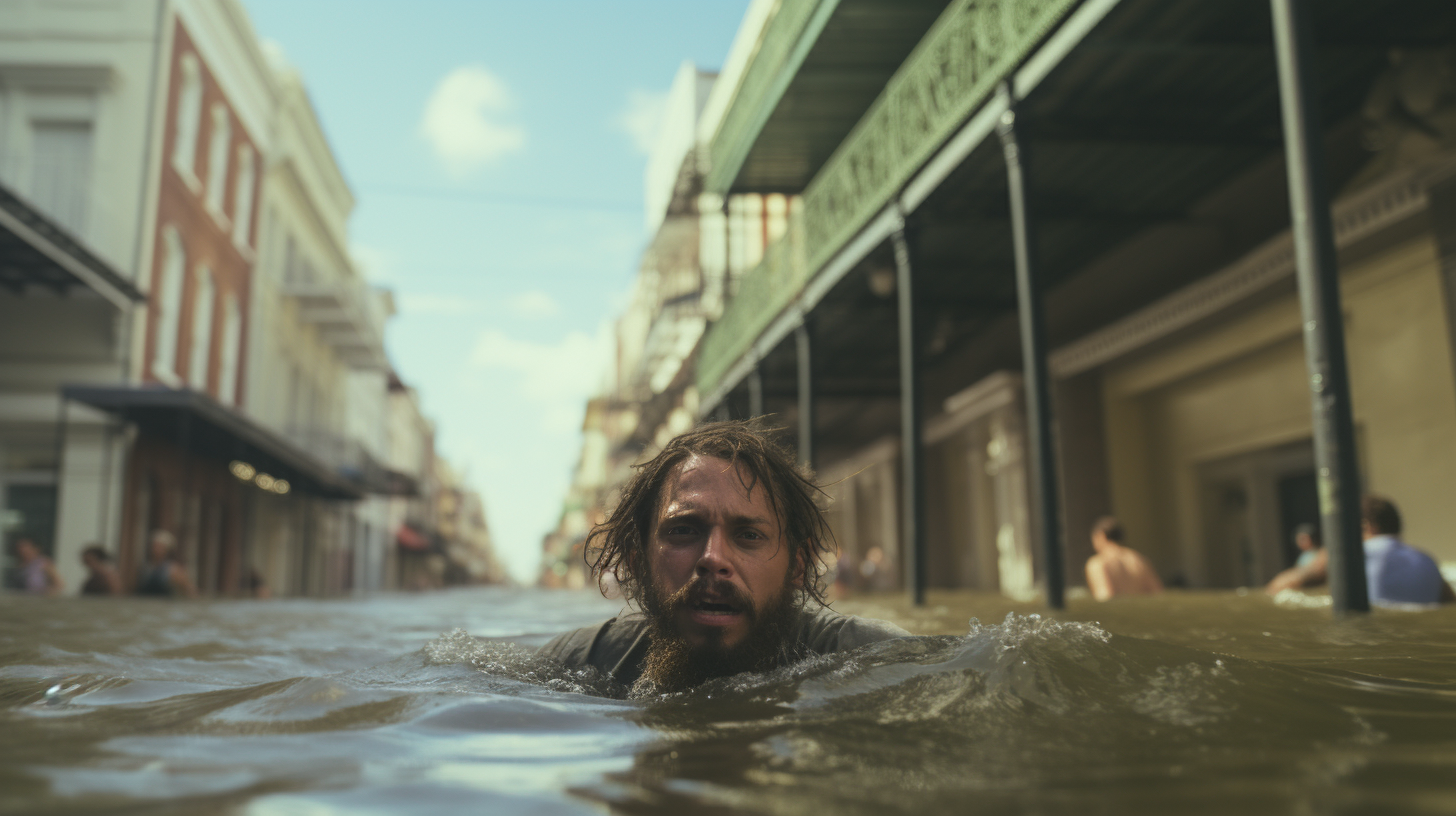
The Disappearance
of Louisiana
The eight chapters of the Louisiana story illustrate the dire consequences if societies resort to cultural divide, civil hysteria, and political populism rather than confronting the challenges ahead with an informed and coordinated approach. The willingness to reject reality and neglect crucial infrastructure projects have and will cripple state preparedness and determine the fate of its residents.
One: The Homeowner Prisoner’s Dilemma.
The real estate business along US coastlines has always been a matter of pessimists selling to optimists, with the optimists remaining a majority. With oceans rising, banks increasingly denying long term home loans, and insurers refusing to issue seaside property policies, the optimists finally became the minority with dire consequences for those who failed to leave in time. Unable to sell, uninsured, their wealth and life savings tied to their property, they waited - anxiously watching the sky and ocean, praying, counting on their luck. But eventually their luck ran out.
Two: The Private Prison Industry’s Lucrative New Business Model.
At the beginning of the 21st century, the for-profit prison industry was on the decline. Damning reports of guard brutality, barely edible food, callous healthcare, and studies attesting little to no fiscal advantage compared to federally run entities made the government reconsider the for-profit model. The industry had to find a new revenue stream.
Three: Coastal Communities and the Willingness to Reject Reality.
In the 20th century, Louisiana’s coastal ecosystem started to disappear at an alarming rate. About 1,800 square miles of coastland were lost in the second half of the century. In 2017 the State of Louisiana published its Coastal Master Plan, projecting that, without decisive counter action, another 2,800 square miles of coastland could be lost within the next 50 years.
The message was clear. Louisiana was sinking. Yet, only a few were prepared to listen.
Four: The Caravan and the End of the Texas Miracle.
As its neighboring states along the Gulf of Mexico slowly drowned, Texas had to confront an increasing numbers of domestic climate refugees crossing into its territory. With fracking companies filing for bankruptcy and the shale oil boom over, Texas’s once-invincible state economy struggled.
Facing freak weather events, flooding, droughts, and a rise in sea levels, the powerhouse had become vulnerable. As the state watched a steady stream of refugees pour across its borders, it became widespread consensus. Something had to happen. Something dramatic. Texas had to act. The refugees had to be stopped. 4: The Caravan and the End of the Texas Miracle.
Five: The Levee Wars. Every State on Its Own.
Ever since Hurricane Katrina breached the Mississippi River levees and drowned New Orleans in 2005, lobbying groups increasingly challenged the authority and regulatory power of the Army Corps of Engineers, paving the way for the so-called Levee Wars.
With inland floods increasing and federal regulation gone, a race began. State against state. County against county. Community against community. Wealthy communities outspent others, building higher levees, securing flood protection at the expense of their poorer neighbors. Until they wouldn’t take it anymore.
Six: Other People Dying. The Panola Camp.
The original Panola County Refugee Detainment Center was designed to house 500 refugees. Within a decade, the privately operated facility expanded to a staggering 5,000 beds. And the refugees kept coming, and the camp kept growing. Finally 20,000 souls were crammed into the Panola camp - four times its capacity and three times its crisis level.
Panola was accustomed to hot and humid summers, but nothing prepared the county for the heat wave brought by the summer of 2048. And in the heat, a drama unfolded that left the state’s conscience forever stained.
Seven: The Year of the Two Catastrophes.
As projected in climate models, our century saw a steady increase of tropical storms and coastal flooding. Residents along the coast kept watch on the ocean, anticipating, preparing for the next strike.
No one expected that the blow would come from the north, or that it would be made of ice and snow.
Eight: The Old River Control Structure and the Attempt to Defy Nature.
The Old River Control Structure was built as a bulwark against the Mississippi River’s natural desire to carve out a new, shorter way to the Gulf of Mexico.
Since the 1980s, it was called out as America's Achilles heel. Ever since its beginnings, the Army Corps of Engineers had to engage in an ever more difficult battle to defy nature. Failure was not an option. Failure would not only be catastrophic to the US and world economies - it would be a fatal blow to the 2 million Mississippi River Delta residents.
But with the effects of rising sea levels and increasing coastal floods working against them, the engineers found themselves more and more on the defense.


